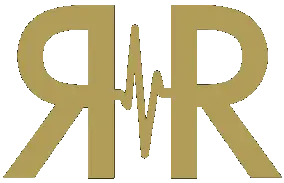In the ever-evolving landscape of job applications, there are two pillars of professional representation: LinkedIn and traditional resumes. Each one has its unique advantages and purposes, but what are the differences between LinkedIn and resumes. To really make an impact on an applicant’s life, it is highly recommended that you utilize both tools.
How Do They Work?
Resumes, the traditional stalwarts of job applications, condense your professional experience into a single concise document, usually one page, though it has become more common and acceptable to expand the resume to two pages. They are ideal for targeted applications where specificity is paramount, offering a structured format to showcase your skills, experience, and achievements. Resumes are best suited for formal job applications and interviews, where a printed document carries significant weight.
The other popular pillar of career expression is LinkedIn, the social networking powerhouse for professionals. This platform has the traditional elements of a resume, but allows users to be a little more creative in their layout, transcending the boundaries of a static resume. It is a dynamic, real-time representation of your professional identity. In a nutshell, LinkedIn is your personal brand. LinkedIn allows you to display a comprehensive view of your skills, work experiences, endorsements, and recommendations. Its interactive nature fosters networking, enabling you to connect with industry peers, recruiters, and potential employers. Even if you would never interact with a profession within the confines of a role, LinkedIn allows you to connect with industry members of fields you have likely never heard of. A well-crafted LinkedIn profile not only reflects your qualifications but also your personality and professional interests, giving employers a holistic view of your capabilities.
When to use one over the other depends on the context. Resumes are crucial for formal job applications and interviews, particularly when employers specifically request a document upload. A tailored resume can be customized for different job applications, emphasizing relevant skills and experiences. Conversely, LinkedIn is invaluable for networking, personal branding, and showcasing your expertise to a broader audience. It is an excellent platform for passive job seeking, where recruiters can discover you based on your skills and interests. Moreover, LinkedIn’s social features allow you to engage with industry trends, join professional groups, and participate in discussions, establishing yourself as an authority in your field.
The Differences Between LinkedIn and Resumes
There are some differences in how to use the two platforms, however. For instance, it is usually not recommended to simply copy and paste your resume onto your LinkedIn profile. Rather, think of LinkedIn as a place to hold your “greatest hits,” so to speak. (Resumes should also list your “greatest hits,” but it is also acceptable to discuss more daily tasks, whereas you may not want those cluttering your LinkedIn profile.) You should certainly link your resume, perhaps included in the “Featured” section that LinkedIn offers, but do not throw the reader all of the information at once. If they want more details, they will search for them or ask you directly.
Likewise, as previously mentioned, it is highly desirable to crosslink your application materials. Whether using a resume or digital profile, include links to one another. In that same vein, you can also include links to work samples, projects, or portfolios in both artifacts. This way, even if the potential employer only sees one portion of your application materials, there will be easy access to the rest of them.
As discussed above, LinkedIn also lets users brand themselves. In many ways, the content you have on LinkedIn: posts, likes, comments, and so forth, can almost serve as a cover letter for those curious to learn more about you or work with you. There will be more on this topic at a later date, but in effect, the LinkedIn profile you share with others can create an interaction with potential employers or clients that had been previously untenable.
In essence, while resumes are essential for targeted applications and formal processes, LinkedIn complements them by providing a digital persona that can enhance your professional visibility. The key lies in using both strategically: craft a compelling resume tailored to specific job applications and maintain an active, professional LinkedIn presence to expand your network, foster connections, and stay updated with industry trends. By understanding the unique strengths of each platform, you can navigate the competitive job market with confidence, leveraging the power of both traditional and digital tools to advance your career.
In conclusion, the synergy between LinkedIn and resumes creates a powerful professional identity. There are plenty of differences between LinkedIn and resumes. Your resume highlights your key achievements and skills in a focused manner, while LinkedIn serves as a dynamic platform for networking and personal branding. Embracing both avenues empowers you in the job market, ensuring that you are not only visible to potential employers but also positioned as a proactive and engaged professional. So, whether you’re crafting a resume or refining your LinkedIn profile, remember that each tool plays a vital role in your journey toward career success.




